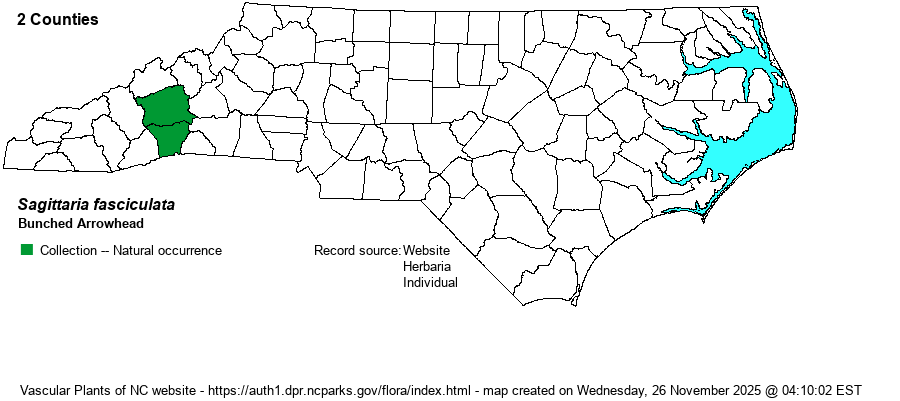| Author | E.O. Beal | |
| Distribution | Limited to a small area of the southern Mountains, found only in Henderson and (rarely) Buncombe counties. This species was described in 1960 by Ernest O. Beal of NC State University.
This is a very narrow endemic species, found only in Greenville Co., SC, and the two NC counties listed above.
| |
| Abundance | Very rare in Henderson County, and presumed extirpated from Buncombe County. This is one of NC's Federally Endangered species, and it also carries a State Endangered status (by state rule). | |
| Habitat | The species is limited to bogs and semi-shaded swampy ground. It does occur in ditches and a few other man-influenced habitats, including wet scrapes. According to Weakley (2020), much of its former habitat has been drained. |
| Phenology | Blooms from May into July, and fruits shortly after flowering. | |
| Identification | This endangered species resembles several other Sagittaria species in its leaves. The several leaves are mostly narrowly elliptic to spatulate (somewhat wider above the middle), growing to about 1 foot tall but only 1-2 inch wide; it does have a short wedge-shaped petiole that merges into the blade. The flowering scape grows to 1-1.5 feet tall, with flowers clustered at 2-4 nodes along this stem. Each flower is about 1 inch wide, with three white petals. It should not be confusable with any other Sagittaria species in its limited sunny to partly sunny wetland habitats in Henderson County. | |
| Taxonomic Comments | None
| |
| Other Common Name(s) | None | |
| State Rank | S1 | |
| Global Rank | G2 | |
| State Status | E | |
| US Status | LE | |
| USACE-agcp | | |
| USACE-emp | OBL link |

